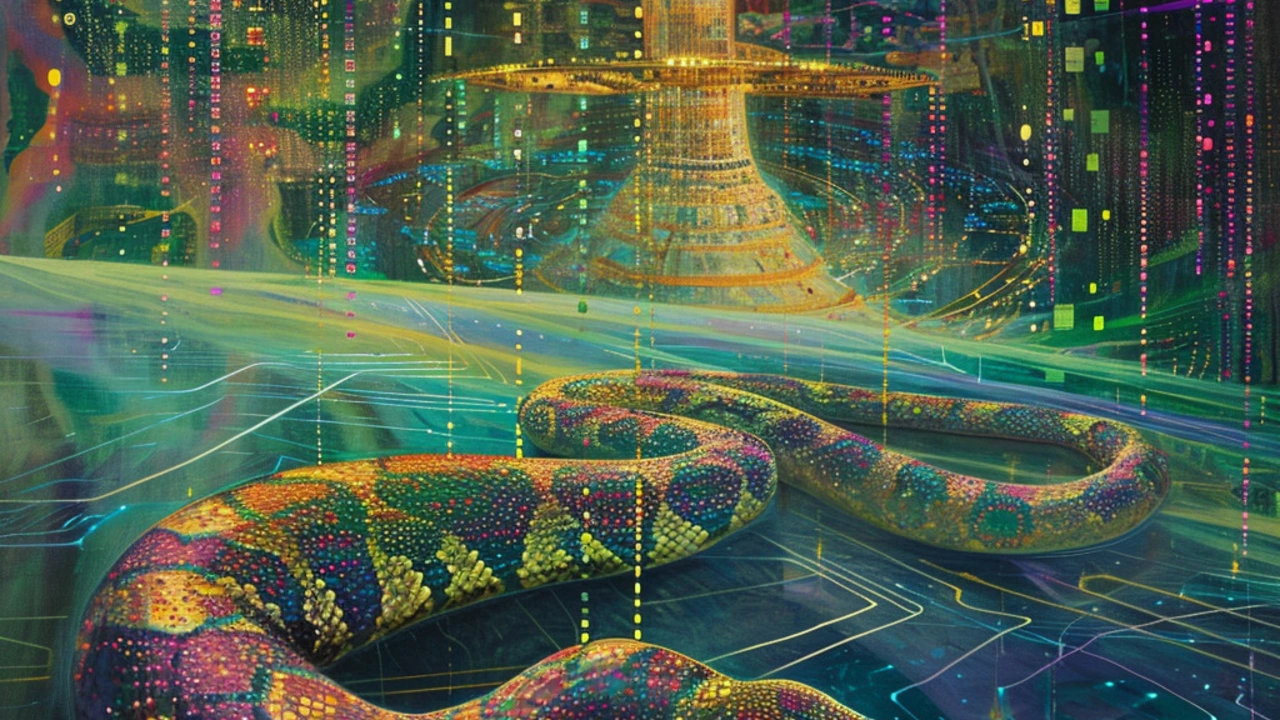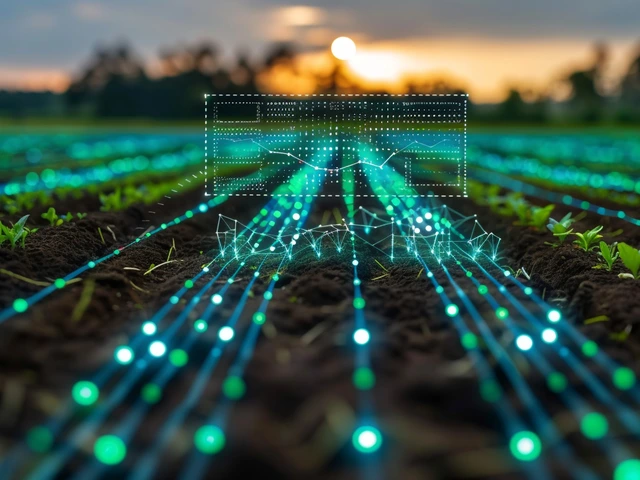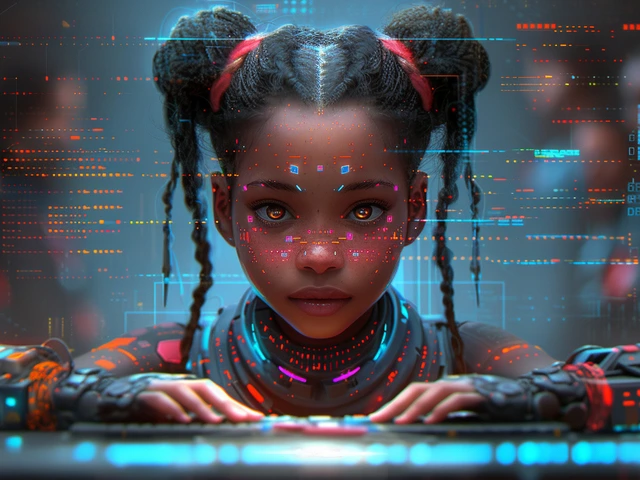Python for Artificial Intelligence: Essential Skills for Aspiring Tech Leaders

Python for Artificial Intelligence: Essential Skills for Aspiring Tech Leaders
The Rise of Python in the AI Arena
Imagine entering a candy shop with every imaginable sweet treat at your disposal, each more tantalizing than the last. That's pretty much how I feel about Python and its role in artificial intelligence (AI). The beauty of Python is such that, even though I’m no clairvoyant, I’d wager my favorite sun hat—and trust me, that’s a treasured item in sunny Brisbane—that Python is set to remain the darling of AI developers for years to come.
Witty banter aside, there are numerous reasons why Python has become synonymous with AI and machine learning. For one, its straightforward syntax is as inviting as a warm Australian beach. It's readable, which makes the life of a programmer simpler and less frenzied than a kangaroo in rush hour traffic. The abundance of libraries, such as TensorFlow, Keras, and Scikit-learn, provide a tool for just about every need. Fancy diving into neural networks? Keras has you covered. Feel like concocting some statistical models? Scikit-learn is your huckleberry. It's like walking into your favorite restaurant and finding the menu has everything your heart has ever desired—and then some.
Story time! I remember when, as a newbie to the AI world, Python took me under its wing rather like an extremely patient mentor. I embarked on a personal project aiming to predict how often I would crave iced coffee based on the weather. Daunting, yes—but Python and its libraries turned an Everest-esque challenge into more of a Mount Coot-tha trek (read: manageable with a delightful view!). It introduced me to terms like 'regression' and 'classification' in a more friendly manner than if I were to have waded through the algorithmic swamps without it. This programming language wasn't just a tool; it became my steadfast companion on a journey of lifelong learning. Python turned the abstract into the tangible, the complex into the comprehensible, and it can do the same for any aspiring tech leader.
Python's Secret Sauce for AI
The secret sauce of Python might as well be that magical jar of Vegemite: an acquired taste for some, but an absolute staple for others. Python's versatility makes it suitable for a smorgasbord of tasks in AI, which reminds me of how, much like Vegemite, it can be spread across various platforms to enrich them. The high-level, interpreted nature of Python means you don’t have to worry about the low-level details. It's akin to having a minion that takes care of the minutiae while you, the mastermind, plot to take over the AI world one algorithm at a time.
Cross-platform compatibility is another feather in Python's cap. You can write your code on a Windows PC, test it on a Linux server, and deploy it on a Mac, all without breaking into a sweat. Versatility for the win! Then there's my favorite aspect: the libraries. There’s a library for almost anything! Need to parse HTML and XML? Beautiful Soup is ready to serve. Drawing graphs more complex than a spider's web? Matplotlib is at your beck and call. Got a hankering for deep learning? Say hello to my little friend PyTorch.
Let me tell you about the time I jumped into computer vision with OpenCV. My eyes were practically cartoon hearts as I began processing images and video without wanting to bang my head on the desk in frustration. OpenCV, a library so extensive yet approachable, felt like that cool, older cousin who knows all the tricks to make you look good at family gatherings. What's not to love about a language that brings such power to your fingertips without making you feel like you’re trying to pat your head and rub your belly at the same time?
Building Foundations: Learning Python for AI
Alright, eager minds, if you're considering embarking on the Python for AI odyssey, fasten your seatbelts; it’s learning time! Approaching Python is like approaching a curious kangaroo – with enthusiasm, but also a healthy respect for its capabilities. So where does one begin? At the beginning, obviously, with a 'Hello World' so warm you’ll think you’ve been hit by a Queensland summer. Dabble in variables, control structures, functions, and modules until you’re comfortable enough to say, 'Yeah, I’ve got this. What’s next?'
Then, it's on to the data structures. Lists, tuples, dictionaries, and sets become your new best mates. They're like the four musketeers of your programming arsenal, each with their own special flair. And don't forget about the array’s cousin, the DataFrame, when you make your acquaintance with libraries like Pandas. Trust me, once you've gotten the hang of slicing and dicing data with Pandas, you'll be feeling like a masterchef in yet another area of your ever-growing Python expertise.
But wait, there's more! As you delve deeper, you'll acquaint yourself with object-oriented programming, something Python excels at. It's like stepping into a garden where every plant needs a different approach. Some need more shade (encapsulation), others need to sprout new shoots (inheritance), and a few of them are just quirky enough to change their colors whenever they like (polymorphism). This learning phase is empowering; it helps convert your thoughts into code as if you’re wielding some sort of digital magic. Who wouldn’t want to be a wizard, after all?
Python's Power Libraries: The AI Enthusiast's Toolkit
Let’s dish out the goodies, shall we? The power libraries in Python's AI realm are the superheroes in the blockbuster movie of your coding life. NumPy is the hulk of numerical computations, with its array-centric approach making it a titan for any type of data manipulation. Then there's SciPy, which is like your Yoda, full of the old-master wisdom in mathematics and scientific computing.
Pandas is your trusty sidekick, making data analysis less of a chore. Want to clean, transform or analyze your data? Pandas is armed with all the weapons for intensive data battles. For machine learning, Scikit-learn is like the Swiss Army knife, equipped with simple tools for complex tasks. Regression models, clustering, classification, you name it—Scikit-learn is at your service.
Diving into the deep end, TensorFlow and PyTorch ignite the rocket engines for deep learning. These libraries are your futuristic cars that drive themselves—autonomous, powerful, and with swanky features. TensorFlow, with its unrivaled scalability, feels like having an army of robots at your disposal. In contrast, PyTorch offers an imperative and dynamic programming nature that is as intuitive as Snapchatting your brunch (OK, maybe a bit more complicated than that, but you get the gist).
AI Projects: From Python Code to Practical Application
Coding in Python for AI projects is where the theory transforms into practice, and let me tell you, it's as satisfying as the crunch of a perfectly toasted slice of sourdough. Start with something simple, like a machine learning model to predict the weather. As you grow bolder, you might venture into creating a chatbot, and suddenly you're not just coding—you're creating a digital personality that could chat about the merits of a lamington with the best of them!
As you gain confidence, the projects naturally become more complex. Perhaps you’ll find yourself immersed in an NLP (Natural Language Processing) venture, where you teach a machine to understand human language as if you're a linguist imparting wisdom to a robotic pupil. Or maybe you'll play god and breathe life into a neural network designed to recognize faces as effortlessly as spotting a koala in a gum tree.
Only a few years back, I paired Python with my passion for vintage fashion, crafting an AI that could recommend clothing combinations from my sprawling collection. With fuzzy logic to approximate human reasoning and a dash of creativity, it was like having a virtual personal stylist without the outrageous fee. This is the kind of practical magic you can achieve when you marry Python with real-world problems.
Stepping Into the Future: Embracing Python for AI Innovation
Dear future tech leaders, by now you should be fully aware that mastering Python for AI is like snagging the golden ticket to Willy Wonka's Chocolate Factory—full of endless possibilities and sweet, sweet rewards. As we look towards the future, the harmonious marriage between Python and AI innovation is one that promises to be both flourishing and dynamically evolving, just like the Brisbane River winding through our city.
Keep abreast of the continuing advancements in Python libraries and AI frameworks. Be like the lorikeet diving into different blooms—sample different libraries, frameworks, and tools as they blossom. Keep your skills sharper than a paring knife in a chef's block. Python is not static; it evolves, grows, and adapts, and you need to go along for the ride like a surfer atop the crest of an ever-growing wave.
But as you paddle into the future, remember to look back at how far you've come. Appreciate the hours you've put in, debugging into the wee hours of the night. Cherish the triumphs small and large, from squashing that pesky indecipherable bug to deploying a sophisticated AI model. It's a path fraught with challenges, but also littered with achievements. And let's be real, in the world of AI development, Python is your steadfast companion—your kindred spirit, your partner in crime. So, grab a Tim Tam, brew some tea, and let's continue to code the future with Python and AI, one line at a time.
About
CH Tech Development is a premier resource for the latest updates and insights in the world of technology development. We provide extensive information, articles, and guides on cutting-edge technological advancements. Explore our site to empower your knowledge about the dynamic field of tech development.
Latest Posts


Revolutionizing Construction: The Unprecedented Impact of AI
By Victoria Gillis Feb 15, 2024

Programming Tricks: The Hidden Gem in the Crown of Coding
By Silas Hawthorne Aug 4, 2023

Coding Skills: A Powerful Asset in the Digital Economy
By Silas Hawthorne Jul 26, 2023

Write a comment